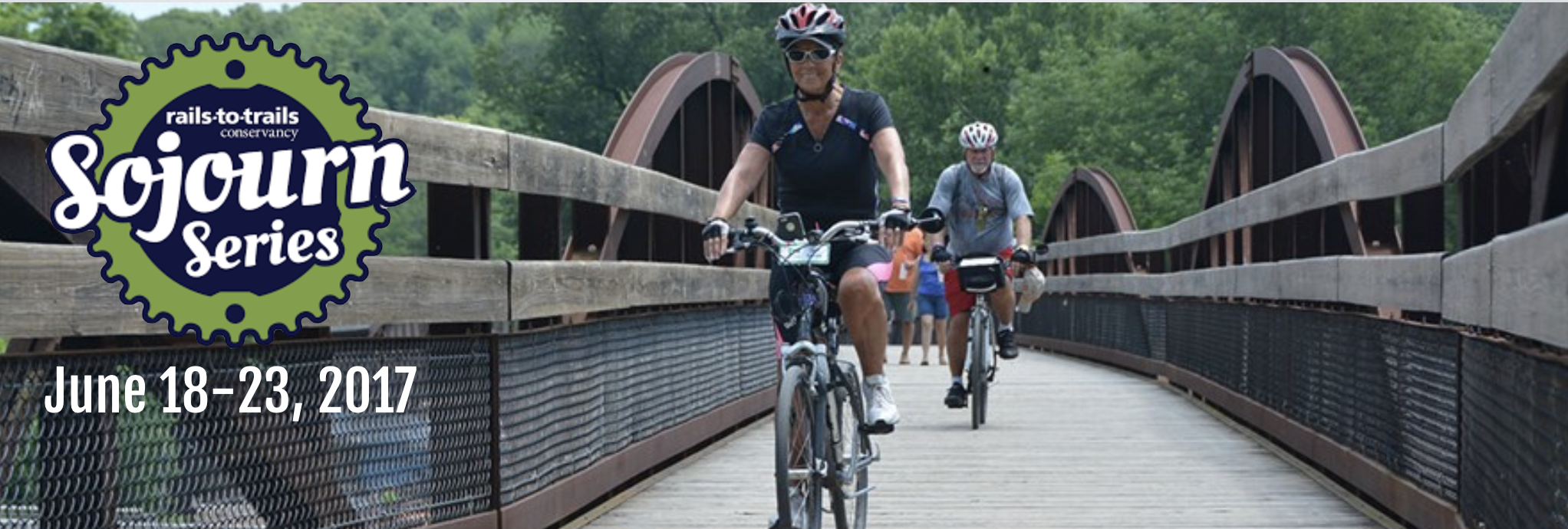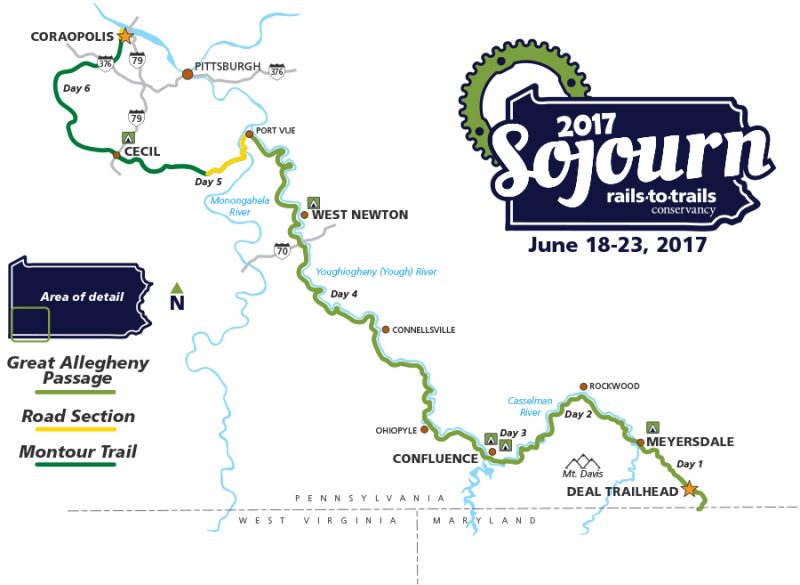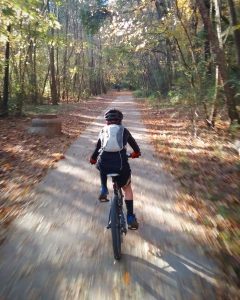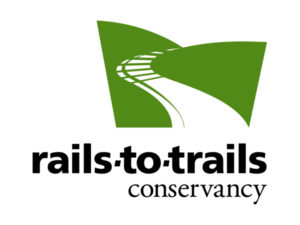Preparing for a Long-Distance Trail Ride: Gear – Part 2
By Tom Sexton
Rails-to-Trails Conservancy’s 2017 Pennsylvania Sojourn will soon be here!
Are you excited yet … because we are!
And as we get ready for an amazing week on the Great Allegheny Passage and Montour Trail, we wanted to provide a few simple tips on how to be “equipment-ready” for a week of amazing experiences. These are helpful for anyone who is heading out for the first time on a major trail adventure, and wants to be prepared! Enjoy!
(This is the second blog in our “be bike-trip ready” series, by the way. Just in case you missed it, check out “How to Prepare for a Long-Distance Trail Ride” posted on our TrailBlog.)
1) Tune up that bike for the trail.
Many people bring their own bikes on long-distance excursions because they’ve ridden them regularly (sometimes daily) over the course of months or years and know what to expect. And while that familiarity is a plus, it’s still very important to make sure one’s bike is in tip-top shape before heading out on a major trip. Chains, tires, brakes, frames—no matter what condition they were in once upon a time—they’re all susceptible to wear and tear.
You might pop into a bike-repair shop for a tune-up or possibly explore if there are any local bike co-ops that can take a look and give your bike a green light to go (some even have bike maintenance classes!). Also, RTC will have some mechanics and support people on hand to help sojourners in case of glitches—but we still recommend that you come bike-ready for maximum fun.
Want a few more tips? Check out: How to Get your Bike in Tip-Top Shape in Under 10 Minutes
2) Consider tire width and surface type.
For long-distance rides over a variety of surfaces, RTC recommends hybrid bikes with 35-millimeter tire widths. This size generally does not impede riders on asphalt or smooth surfaces (which accommodate road bikes and racing bikes well) and also provides traction on crushed sandstone or packed dirt. FYI: TrailLink.com provides surface and route information for more than 22,000 miles of rail-trails in the U.S.
The route for RTC’s 2017 Pennsylvania Sojourn has a mostly crushed-stone surface and on-road sections, and just a few major hills.
3) Learn how to fix a flat.
This is key. Some people—particularly if they are hard riders—can be more prone to flat tires. And sometimes the conditions of a section of trail (or various unknown forces—nature, animals, people, etc.) can cause random unwelcome mishaps.
If you are on your own, or with just a few friends or family members, it’s recommended that at least one of you is 
JUST TO REAFFIRM: RTC will have volunteers who can assist you should you have an unlucky flat during the trip. But because each rider is encouraged to “go at their own pace,” we still urge you to carry some extra tubes and a tire repair kit.
4) Do an inventory of your body—after a long ride.
Take a series of long rides. How do you feel afterward? Is your backside burning or getting sore? Do your joints or shoulders hurt—which could be caused by where your seat is placed? Knowledge is power, and understanding how you feel after a ride provides you with the power/ability to make small changes such as switching out your seat (or readjusting it), buying (or borrowing) a pair of padded biking shorts, or simply just working on building some muscle to serve as better cushion for your behind!
And with that said …
5) Be prepared with the essentials.
In our recent blog, “How to Prepare for a Long-Distance Trail Ride,” we talked about the importance of water, water, water. A good water bottle (or two) and a sturdy bottle cage (mounted to your bike) are important for all riders.
Another lifesaver: sunblock. Many people underestimate the power of the sun during even a mildly warm day. (Even if you’re riding on a trail with lots of tree canopy, like the Great Allegheny Passage or Montour Trail, it’s always good to be prepared!)
You also want to make sure that your clothing and apparel (footwear, rain gear, sunglasses, etc.) can hold up under the elements. Don’t wait until the last minute. Whether you’re borrowing or buying—test it over a period of time before your trip to make sure it’s right for you.
And a little friendly advice for people like me who are 60 and older: Try compression sleeves for your calves or arms—which really help with blood flow (and block the sun)!
See you on the trail!
Want to learn more about what to expect on this year’s ride? Check out our most recent blog, How to Prepare for Your First Long-Distance Trail Ride.




